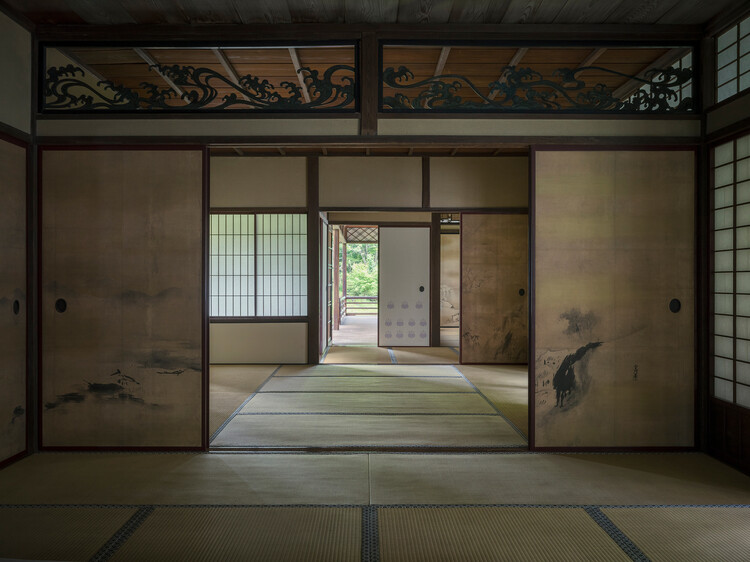 Rinshunkaku Temple restoration, 2019-2022. Documented in “Artisans of Reiwa – The Restoration of Rinshunkaku” . Image © Katsumasa Tanaka
Rinshunkaku Temple restoration, 2019-2022. Documented in “Artisans of Reiwa – The Restoration of Rinshunkaku” . Image © Katsumasa Tanaka
Share
Share
Or
https://www.archdaily.com/1032340/artisans-of-the-reiwa-era-documentary-showcases-traditional-japanese-wood-construction-and-craftsmanship
The Rinshunkaku Temple is a notable example of early Edo-period residential architecture. Originally built in Mie Prefecture by the Kishu Tokugawa family, Rinshunkaku was relocated to Sankeien, a traditional Japanese garden in the city of Yokohama, during the Taisho era (1912-1926). The garden was created in the early 20th century by businessman and art patron Sankei Hara and features a number of historic buildings relocated from Kyoto, Kamakura, and other areas of Japan. Rinshunkaku, one of the garden’s gems, is a prime example of traditional Japanese architecture and wood construction. Its historical value motivated a large-scale restoration project in 2019, documented in the film Artisans of the Reiwa Era (Reiwa no Shokunin-tachi), filmed and edited by Katsumasa Tanaka and Hiroshi Fujiki. The documentary offers a close, detailed view of Japanese craftsmanship and wood expertise, highlighting rare traditional techniques and paying tribute to the artisans who preserve them.
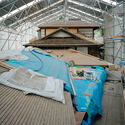

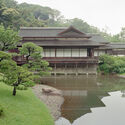
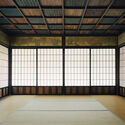
 + 7
+ 7
The restoration took nearly four years to complete and was carried out by Kojima Construction Co., Ltd., under the supervision of the Association for the Preservation of Cultural Heritage Structures (a public interest incorporated foundation). A traditional wooden structure, Rinshunkaku features a roof made of natural plant-based materials, which inevitably deteriorate over time due to exposure to the elements. As such, regular maintenance is essential, and a full re-thatching is carried out approximately every 30 years as part of its long-term preservation cycle.
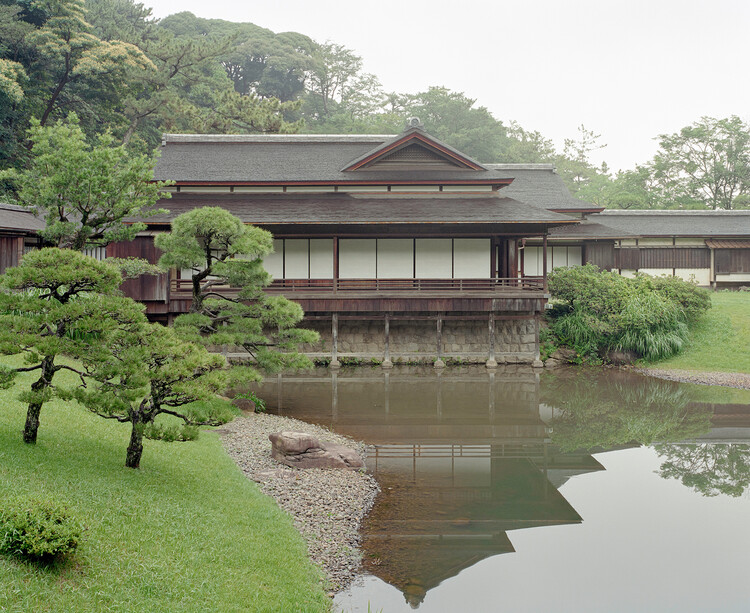 Rinshunkaku Temple restoration, 2019-2022. Documented in “Artisans of Reiwa – The Restoration of Rinshunkaku” . Image © Katsumasa Tanaka
Rinshunkaku Temple restoration, 2019-2022. Documented in “Artisans of Reiwa – The Restoration of Rinshunkaku” . Image © Katsumasa Tanaka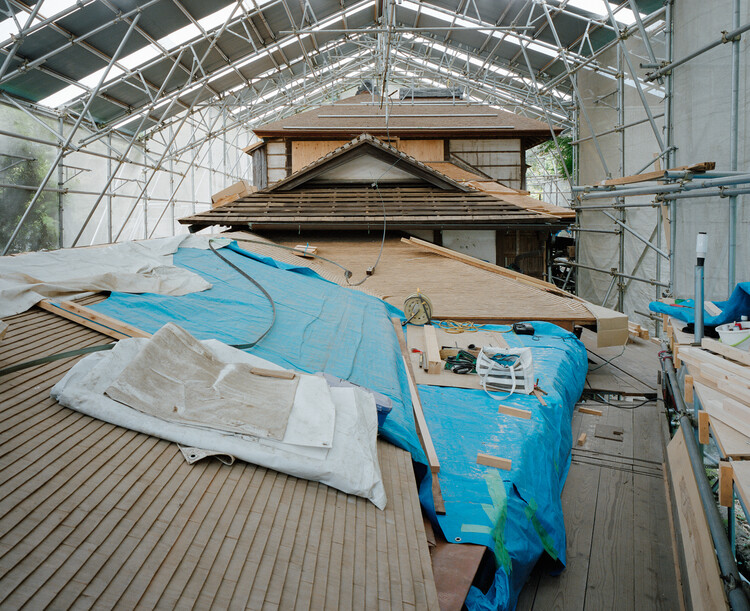 Rinshunkaku Temple restoration, 2019-2022. Documented in “Artisans of Reiwa – The Restoration of Rinshunkaku” . Image © Katsumasa Tanaka
Rinshunkaku Temple restoration, 2019-2022. Documented in “Artisans of Reiwa – The Restoration of Rinshunkaku” . Image © Katsumasa Tanaka
This 30-year restoration cycle is not only practical for maintaining the structure but also plays an important role in preserving craftsmanship. The restoration included a complete re-thatching of the roof and a seismic assessment, now standard in the restoration of Japanese cultural properties, which revealed structural vulnerabilities and prompted reinforcement. The film showcases roofing techniques using thatch, Hinoki bark, and the single-roof kokerabuki style, which, according to the filmmakers, are methods now rarely seen outside of designated cultural properties.
Related Article Old Homes, New Stories: 11 Traditional Japanese Homes Renovated for Modern Living
From the replacement of the original wooden shingles to the restoration of walls and sliding panels, the documentary highlights the craftsmanship involved in preserving the building’s original character. It follows the process from sourcing the bark needed to replace the roof to dismantling the staircase, offering a respectful tribute to artisanal skill. The film demonstrates how traditional Japanese carpentry, plastering, wall painting, and roofing techniques are applied in the modern era by skilled artisans, many of whom are among the few remaining in their fields. According to photographer and filmmaker Katsumasa Tanaka, projects like the Great Rinshunkaku Restoration serve as valuable opportunities for younger craftsmen to learn and carry on these traditions, making the cycle essential for both technical preservation and the transmission of generational knowledge.
 Rinshunkaku Temple restoration, 2019-2022. Documented in “Artisans of Reiwa – The Restoration of Rinshunkaku” . Image © Katsumasa Tanaka
Rinshunkaku Temple restoration, 2019-2022. Documented in “Artisans of Reiwa – The Restoration of Rinshunkaku” . Image © Katsumasa Tanaka
Other historic buildings relocated from culturally rich cities like Kyoto and Kamakura can also be found throughout Sankeien Garden in Yokohama. Privately owned by Sankei Hara (whose real name was Tomitaro Hara) in the early 1900s, the garden was always open to the public, and in 1906, Hara began widely welcoming visitors. Today, Sankeien is designated a National Place of Scenic Beauty and features ten buildings listed as Important Cultural Properties of Japan, along with three Tangible Cultural Properties designated by the City of Yokohama. It continues to attract visitors from across Japan and around the world as a place to connect with traditional Japanese culture through seasonal events and immersive experiences.
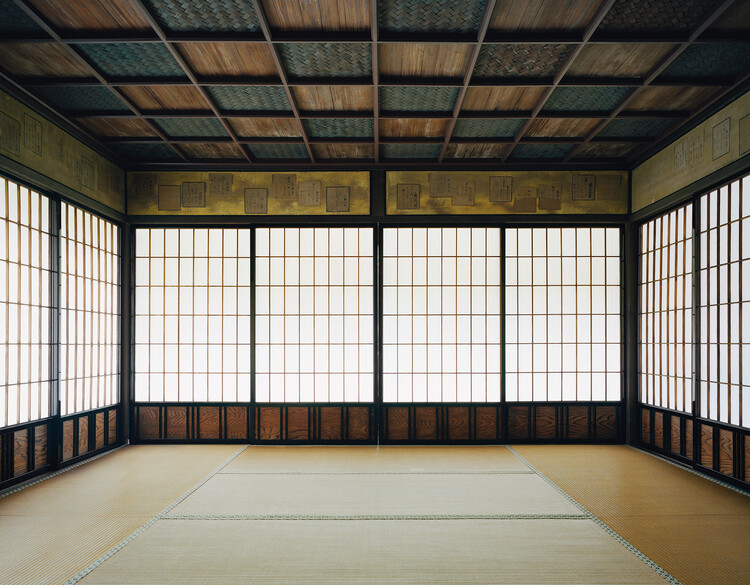 Rinshunkaku Temple restoration, 2019-2022. Documented in “Artisans of Reiwa – The Restoration of Rinshunkaku” . Image © Katsumasa Tanaka
Rinshunkaku Temple restoration, 2019-2022. Documented in “Artisans of Reiwa – The Restoration of Rinshunkaku” . Image © Katsumasa Tanaka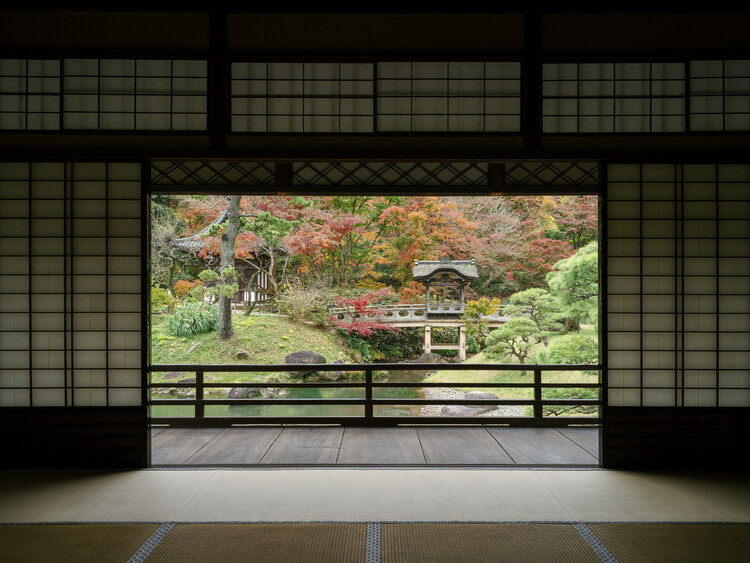 Rinshunkaku Temple restoration, 2019-2022. Documented in “Artisans of Reiwa – The Restoration of Rinshunkaku” . Image © Katsumasa Tanaka
Rinshunkaku Temple restoration, 2019-2022. Documented in “Artisans of Reiwa – The Restoration of Rinshunkaku” . Image © Katsumasa Tanaka
The Artisans of the Reiwa Era documentary is freely available on Vimeo. Other recent news in the field of Japanese architecture worldwide includes the exhibition of a restored module from Tokyo’s Nakagin Capsule Tower as part of a retrospective at MoMA in New York, and the recent success of the citizens’ campaign to preserve Tadao Ando’s MPavilion in Melbourne. More recently, in Osaka, OMA and Shohei Shigematsu designed Louis Vuitton’s Visionary Journeys exhibition at the Nakanoshima Museum of Art. The city is hosting the World Expo until October 13, 2025, featuring a wide array of national pavilions, including Sou Fujimoto’s largest wooden architectural structure in the world.

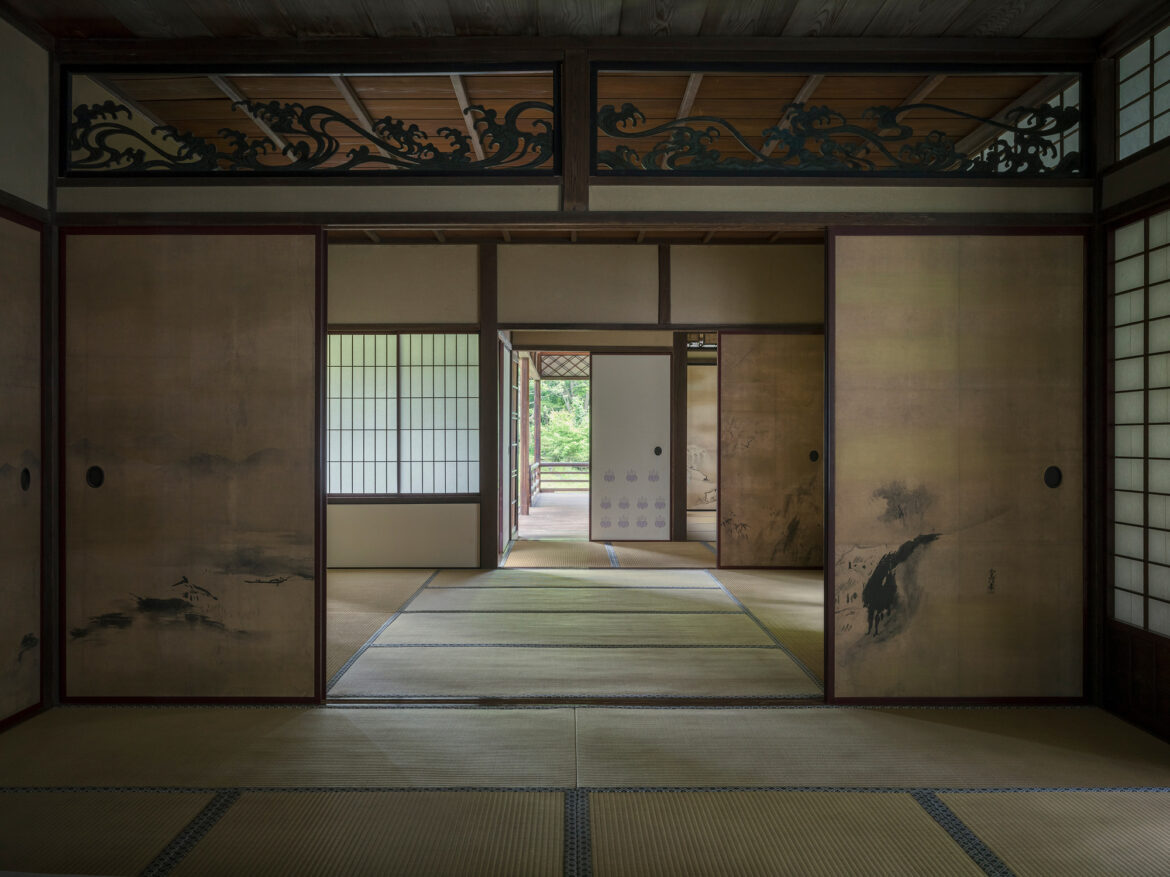
AloJapan.com